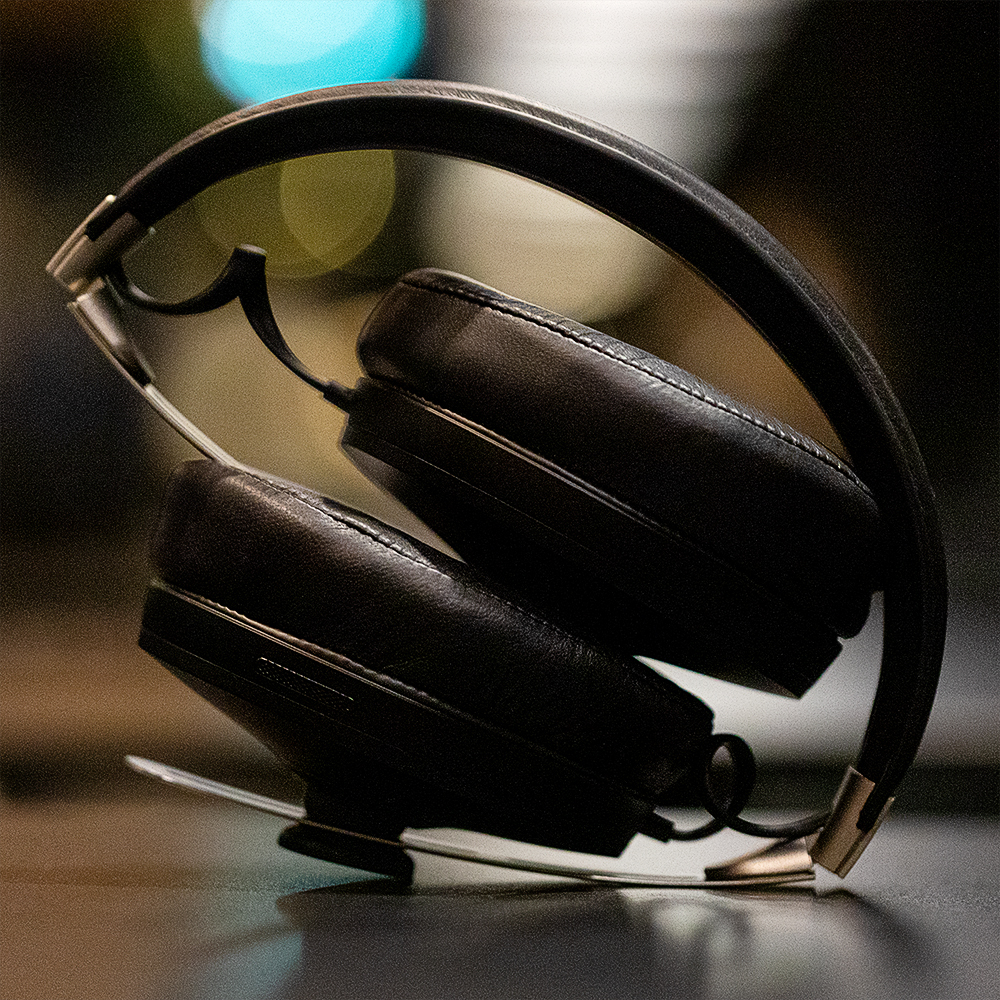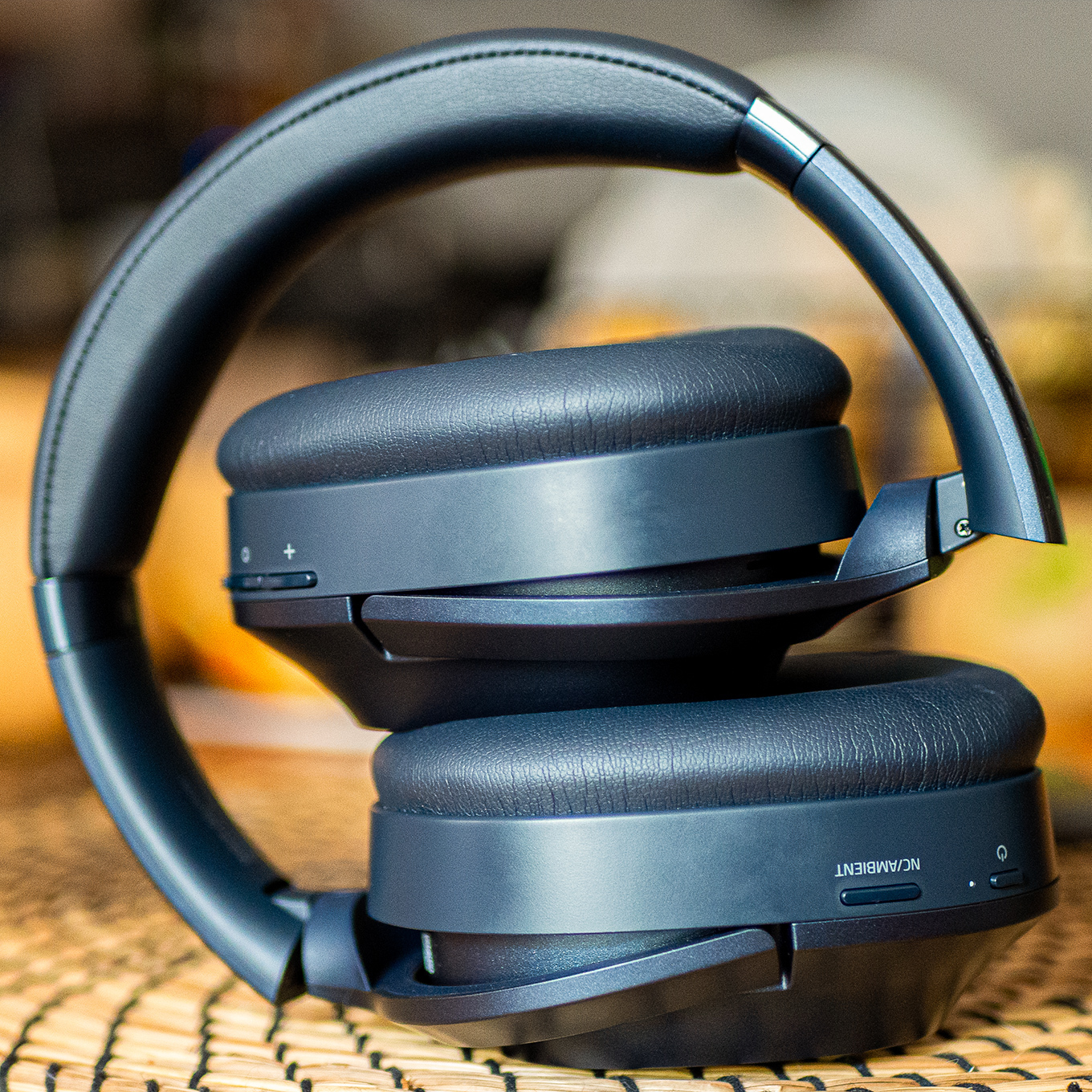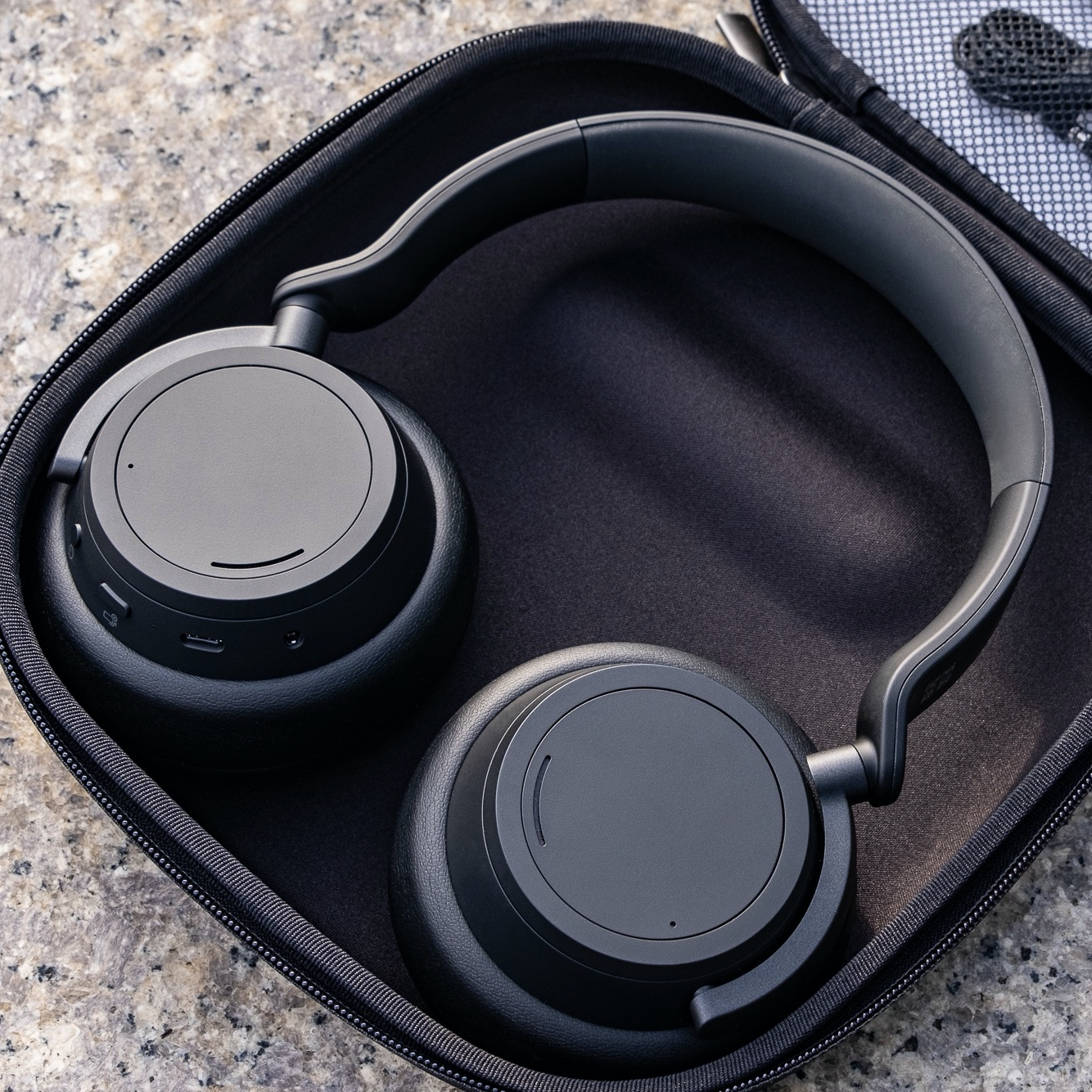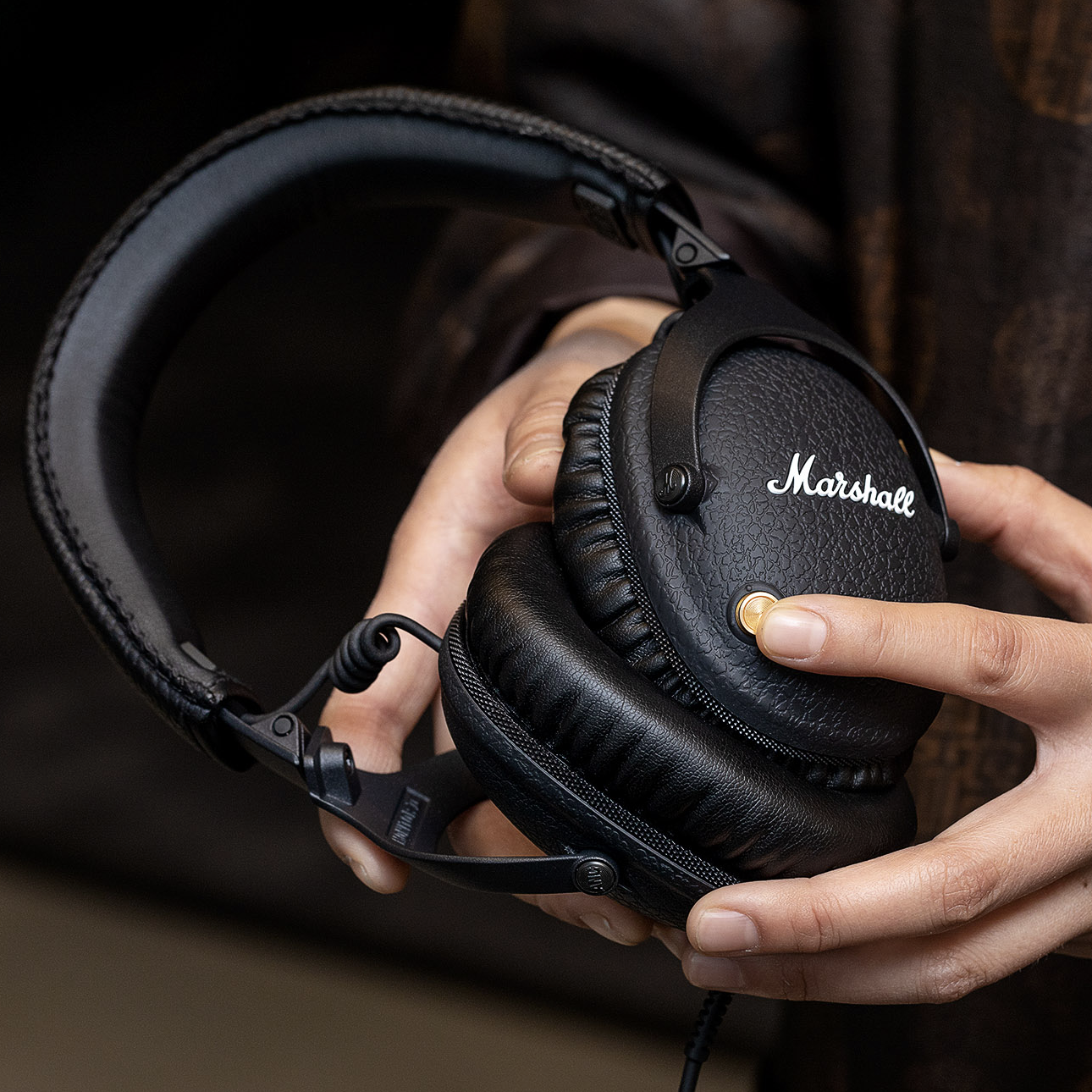Noise-canceling headphones are an essential piece of kit during regular life when commuting to work, traveling, or if you’re trying to dull distractions at the office. But they’re also important as we continue to tally yet more weeks spent at home. It’s always nice to get a reprieve from the people you live with and be in your own private, serene bubble for a while — and noise-canceling headphones are a good way to find that peace and quiet. Since they envelop your ears, wireless headphones will always do better at erasing surrounding distractions than noise-canceling earbuds like the AirPods Pro or Sony WF-1000XM3s.
The criteria for picking the best noise-canceling headphones hasn’t changed: the most important measures are how well they can eliminate outside noise, sound quality, battery life, whether they support simultaneous pairing to multiple devices, and comfort. Aside from one general pick that does a lot of things really well, I’ve also gathered together some other recommendations if you want to stray from the popular choice.
:no_upscale()/cdn.vox-cdn.com/uploads/chorus_asset/file/21699857/IMG_0620-1.0.jpeg)
The best noise-canceling headphones for most people
It took nearly two years for them to arrive, but Sony’s WH-1000XM4 noise-canceling headphones were worth the wait. They might look identical to the previous fantastic 1000XM3s, but the company has made slight design tweaks for added comfort on those days when you find yourself wearing the M4s for hours.
Verge Score 9 out of 10

Noise cancellation has been further improved from the performance of the M3s, putting Sony neck and neck with Bose in overall effectiveness of silencing your surroundings. Sound quality is basically identical to the previous headphones — it’s still punchy, full, and very enjoyable — as is the 30-hour maximum battery life. But Sony has addressed two of the biggest issues with the M3s this time around: the 1000XM4s have improved voice microphone performance, and they can now connect to two devices simultaneously, so you can stay clued in to what’s happening on your phone when you’re working away on your laptop or tablet.
There are also new features intended for convenience: the optional “speak to chat” function will automatically pause your music and pipe in ambient audio when the headphones detect you’ve started talking. And the 1000XM4s can also tell when they’ve been removed from your ears, at which point, your audio will automatically pause. They still cost the same hefty $350, but you’re getting more for your money with the 1000XM4s than before. They will start shipping in mid-August. The previous M3 headphones are still a fine pick even now if you can snag them at a good sale price.
:no_upscale()/cdn.vox-cdn.com/uploads/chorus_asset/file/16322317/cwelch_190605_3471_0002.jpg)
The best noise-canceling headphones for videoconferencing and making calls
Bose is the brand synonymous with noise-canceling headphones, and the Noise Canceling Headphones 700 are another example of why that reputation is well-earned. They have satisfactory sound, excellent voice call quality, and great noise cancellation effectiveness. It’s really a flip of the coin between these and Sony’s 1000XM3 headphones in the eyes of many. Sony ekes out superior battery life and more lively, impactful sound, but Bose’s support for multipoint pairing with two devices at once is a big plus. The Noise Canceling Headphones 700 are comfortable to wear for long stretches of time, even if they aren’t as feather-light as the company’s less expensive QC35 II headphones.
When it comes time to join a Zoom meeting or call someone, you’ll be heard loud and clear by whoever’s on the other end, which can’t be said for all wireless headphones on this list. Bose’s microphone setup on the Noise Canceling Headphones 700 is second to none, though Jabra also fares well here. Battery life is where Bose trails its competitors, with the Noise Canceling Headphones 700 rated at up to 20 hours — short of the 30 hours you can reach with Sony or other picks below.
Verge Score 8 out of 10

:no_upscale()/cdn.vox-cdn.com/uploads/chorus_asset/file/19167214/bfarsace_190903_3639_0005.jpg)
:no_upscale()/cdn.vox-cdn.com/uploads/chorus_asset/file/20663802/16605325_EF7D_46D0_9852_12CE9CEAF229.jpeg)
The best noise-canceling headphones for sound quality
If you prioritize enjoying your music over drowning out the world, then both Sennheiser and Shure have fantastic options with superb sound quality and adequate noise cancellation. Sennheiser’s Momentum Wireless have detailed, bass-rich, and vibrant sound combined with sublime comfort. The same can be said for the newer Shure Aonic 50 headphones, which support advanced codecs like apt-X HD and LDAC.
If you’re a stickler for audio quality, both headphones can be used wired with either a 3.5mm headphone jack or over USB-C. They each outdo Bose and other more mainstream picks in terms of build quality and materials. That premium feel does demand a bit more, with both of these selling for the same $400 price tag. Their noise-canceling isn’t on par with the best, but you still get convenient software features like ambient passthrough and customizable EQ on top of the brilliant sound.
Verge Score 8 out of 10

Verge Score 8 out of 10

:no_upscale()/cdn.vox-cdn.com/uploads/chorus_asset/file/19984843/cfaulkner_200514_4023_006.0.jpg)
The best noise-canceling headphones for around $200
Razer departed from its usual gaming headset formula with the noise-canceling Opus headphones, which are designed for a mainstream audience looking to spend less money than the $300 or more that Sony and Bose demand. The Opus headphones are a strong first showing, with good comfort, sturdy build quality, clear and balanced audio quality, and noise cancellation that’s a few rungs below the leaders but still performs well.
Razer omitted features like multipoint Bluetooth pairing, and you’re limited to preset EQ settings instead of having full control, but those are really the only downsides of the Opus cans. And the company did at least include auto-pause for when you take them off. As long as you don’t confuse these for gaming headphones — they’re not meant to be — you should be pleased with what Razer is offering up for at least $100 less than the big competition.
Verge Score 7.5 out of 10

:no_upscale()/cdn.vox-cdn.com/uploads/chorus_asset/file/19316747/cwelch_191024_3759_0007.jpg)
The best on-ear noise-canceling headphones
The Beats Solo Pro headphones rest on your ears instead of completely covering them, which some people might prefer. A popular choice at the gym, the Solo Pros have sweat resistance and a strong clamping force on your head so that they’ll stay put during a workout or run. As with most modern Beats headphones and earbuds, the Solo Pros are tuned to drive your day with some oomph to the bass, though they’re more well-balanced than Beats of old.
If you use an iPhone, the Solo Pros can take advantage of Apple ecosystem features like audio sharing and the same seamless setup / pairing process as AirPods. They’ll also be getting the new spatial audio feature coming in iOS 14, which will let you get a surround sound-like experience when watching movies on your iOS device.
They’re not as great at noise cancellation as Bose or Sony, but the on-ear design and a snug fit help the Solo Pros offer good passive noise isolation even when NC is switched off. (You can hit up to 40 hours of battery life if you keep noise cancellation off.)
Verge Score 8 out of 10

:no_upscale()/cdn.vox-cdn.com/uploads/chorus_asset/file/19993333/A63D2F31_6D5E_4257_8AC5_F4A33840CC40.jpeg)
The best noise-canceling headphones for ease of use
With the Surface Headphones 2, Microsoft retained the brilliant turning-dial control scheme of the first-generation pair and made important improvements elsewhere to sound quality and battery life. After you’ve gotten used to adjusting volume or noise cancellation levels simply by twisting the dial around each ear cup, you’ll never want to go back to hunting for button nubs again. The Surface Headphones 2 are also an excellent pick for productivity, as their multipoint pairing works seamlessly when a call comes in on your phone while you’re at work on your PC. And now, they come in black, so you’re no longer stuck with the stale light gray color.
Verge Score 8 out of 10

:no_upscale()/cdn.vox-cdn.com/uploads/chorus_asset/file/19782753/awhite_20200310__3930_0053.jpg)
7. Marshall Monitor II ANC
The best noise-canceling headphones for style
Marshall’s wireless headphones have proven surprisingly popular, and the company’s most expensive pair is also its best yet. The Monitor II ANC headphones are priced at $320, which puts them on the same playing field as Bose, Sony, and other tech companies that have been making premium noise-canceling cans for many years.
Marshall doesn’t quite match them in sound quality or NC effectiveness; the Monitor IIs have warm, textured sound and perform decently at cutting down on ambient noise. But they definitely stand out from the pack in looks, with a design that speaks to the company’s heritage and the signature gold joystick that makes the Monitor IIs simple to control. They can also last up to 30 hours with NC enabled or up to a staggering 45 hours if you’re already someplace quiet and can do without the feature. A lack of AAC codec support at this price stings, but I’ve enjoyed the Monitor IIs every time I’ve put them on. They’re more than just an amp brand stamped onto an average pair of headphones.
Verge Score 7.5 out of 10

